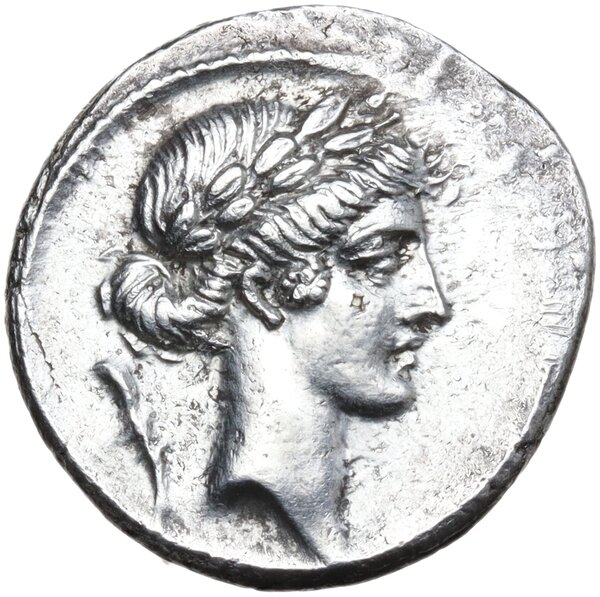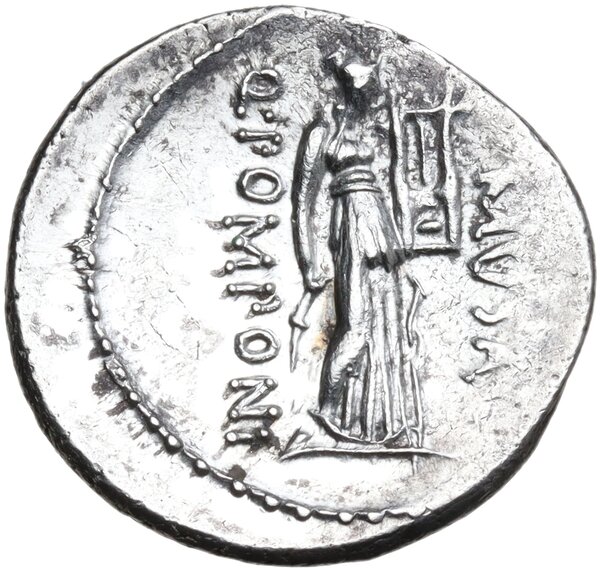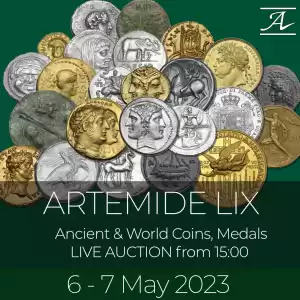Not Intended Erato


Q. Pomponius Musa. AR Denarius, 66 BC. Obv. Laureate head of Apollo right; behind, plectrum. Rev. Erato standing right, right arm lowered, holding lyre and plectrum; Q. POMPONI on left, MVSA on right. Cr. 410/7d (as Terpsichore); B. 17 (as Terpsichore); Banti Pomponia 20; Phillip Davis, p. 395, fig. 11.. 3.75 g. 18.50 mm. R. Rare, lustrous and superb. Some surfaces bums on obverse and minor flatness on reverse, both insignificant and beside the border, otherwise. good EF/EF. Is our opinion – according to Banti, pace Babelon and Crawford – that in this series the obverse symbol plectrum (often interpreted, in error, as “a flower”) identifies in any case the Musa Erato, while only the symbol tortoise identifies the Musa Terpsichore. Inexplicably this type, correctly interpreted by Admiral William Smith already in 19th century (Descriptive Catalogue of a Cabinet of Roman Family Coins Belonging to the Duke of Northumberland, London 1856) was misdescribed (as representing Terpsichore) by Babelon and by later numismatic autorities, Crawford included. In 1980 A. Banti (CNR, vol. 7, pp. 187-210) was the first author – since W. Smith – to assign all the “plectrum coins” to Erato and only the “tortoise coins” to Terpsichore. For a more detailed explanation of the question, see the excellent essay of Phillip Davis “Erato or Terpsichore; A Reassessment” in Fides, The American Numismatic Society, New York 2015. Davis admirably says : “The muddle of Erato and Terpsichore dies very hard. No pun intended.” Erato was the Muse of Erotic Poetry.


